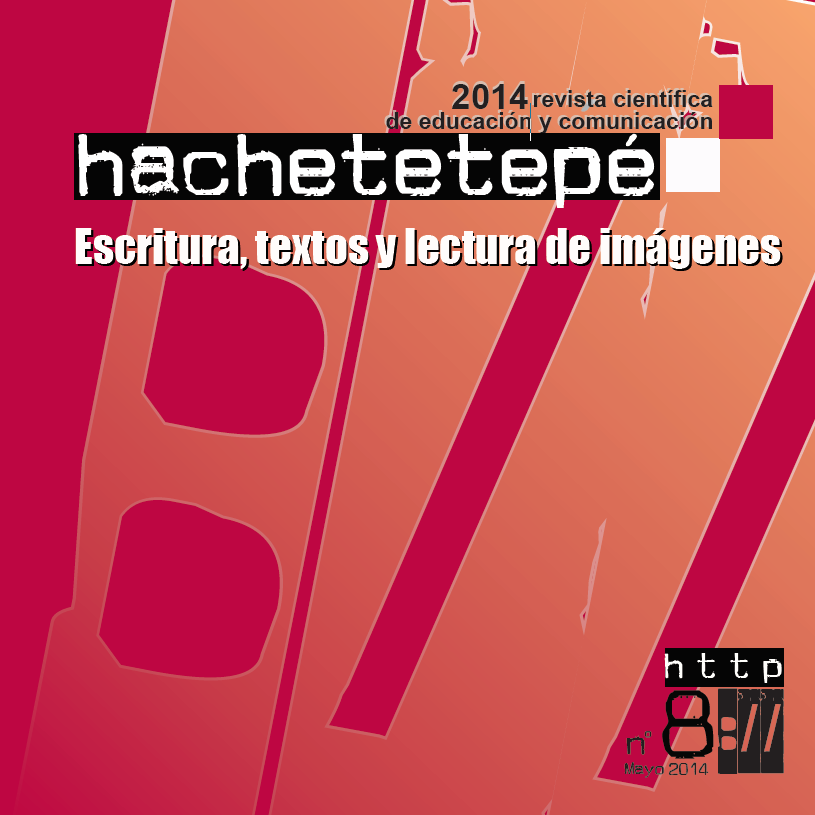Pictorical intertextuality and like great artwork are turn into illustrations of children literature

Info
Abstract
In children’s literature the young reader can come across original illustrations, done ex profeso for the book in question, or “recycled” illustrations which totally or partially reproduce paintings belonging to universal art tradition. When this happens, reading complexity increases exponentially as the child is not always equipped to establish intertextual connections and discover the pictorial hypotexts that underlie these illustrations. This study comments on different cases of the use of pictorial hypotexts, the various forms these can take, the solutions that are usually found for the problems created by pictorial intertextuality and finally offers a series of reflections on what pictorial hypotexts can add to children’s reading education.
Keywords
Downloads
How to Cite
License

This work is licensed under a Creative Commons Attribution-NonCommercial-NoDerivatives 4.0 International License.
Those authors who have published with this journal, accept the following terms:
- They will retain their copyright and guarantee the journal the right to first publication of their work, which will simultaneously be subject to the Creative Commons Attribution License . They may be copied, used, disseminated, transmitted and publicly displayed, provided that the authorship, url, and magazine are cited, and are not used for commercial purposes. No derivative works are allowed.
- They may adopt other non-exclusive license agreements for the distribution of the published version of the work (e.g., deposit it in an institutional telematic archive or publish it in a monographic volume) provided that the initial publication in this journal is indicated.
- Disseminate your work through the Internet (e.g., in institutional telematic archives or on your website) once the manuscript is accepted, which may lead to interesting exchanges and increased citations of the published work. (See The effect of open access).
Hachetetepé. Scientific journal of education and communication does not charge a fee for the submission of manuscripts or for the publication of its articles.
References
Colomer, T. (2002). Siete llaves para valorar las historias infantiles. Madrid: Fundación Germán Sánchez Ruipérez.
De Amo Sánchez-Fortún, J. M. (2003). Literatura Infantil: claves para la formación del la competencia literaria. Málaga: Aljibe.
Díaz Armas, Jesús (2003): “Aspectos de la transtextualidad en la Literatura Infantil”, en Mendoza Fillola, A. y Cerrillo Torremocha, P. (Coords.). Intertextos: Aspectos sobre la recepción del discurso artístico. Cuenca: Ediciones de la Universidad de Castilla-La Mancha; 61-97.
Durán, T. (2009): Álbumes y otras lecturas. Análisis de los libros infantiles. Barcelona: Octaedro.
Hoster Cabo, B. y Lobato Suero, M. J. (2012). “Modus operandi en el entramado intertextual de los álbumes ilustrados de Anthony Browne”. En Revista Escuela Abierta, 15; 51-88. (http://dialnet.unirioja.es/descarga/articulo/4078720.pdf) (Recuperado: 20/12/13)
Obiols Suari, N. (2004). Mirando cuentos. Lo visible e invisible en las ilustraciones de la literatura infantil. Barcelona: Laertes.
Schritter, I. (2005). La otra lectura. La ilustración en los libros para niños. Buenos Aires: Lugar Editorial.

